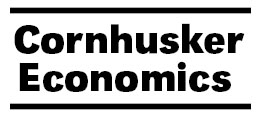Agricultural Economics, Department of

Cornhusker Economics
Date of this Version
2016
Document Type
Newsletter Issue
Citation
Cornhusker Economics October 26, 2016
Abstract
The prevalence of overweight and obesity in the U.S. population has increased steadily over the past four decades, impacting health, livelihoods, and quality of life. Recent estimates of U.S. adult and childhood overweight and obesity rates suggest that nearly 35 percent of adults are obese and another 34 percent are overweight, while 17 percent of children are obese and 15 percent overweight. Obesity is associated with a number of negative consequences that impact both the individual and society. These consequences include poorer health, an increased risk of associated non-communicable diseases, such as type-2 diabetes, certain types of cancer, and heart disease, and reduced quality of life operating through a variety of channels, including decreased physical function, social stigma, reduced self-esteem and increased rates of depression. Additionally, increasing rates of obesity lead to direct and indirect economic costs, such as higher health care costs, and other negative economic impacts, like increased absenteeism and presenteeism— reduced productivity when people are at work.


Comments
Copyright 2016 University of Nebraska.